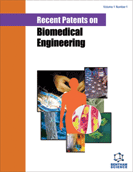Abstract
In medicine, exploration of the digestive tract by non-invasive means is designed to improve patient monitoring. Exfoliated epithelial cells can be isolated from several body fluids (i.e., breast milk, urines, and digestive fluids) as a cellular mixture (senescent, apoptotic, proliferative, or quiescent cells). Exfoliation is a phenomenon that participates in the maintenance and evolution of the mucosal architecture. By quantifying the degree of this phenomenon, i.e. by assessing the loss of epithelial cells or closely related molecular compounds from the gut mucosa, it is possible to evaluate pharmacological or nutritional stress in clinics as well as during epidemiological surveillance. Two methods have been proposed to obtain relevant biological information from exfoliated epithelial cells. The first is based on microscopic examination and the immunophenotyping of parietal cells isolated from gastric fluids aspirates. The second proposes to recover all eucaryote transcripts to perform microarray analysis. This minireview will introduce recent methodological developments and patents in the field of gastrointestinal exfoliation.
Keywords: Exfoliation, Epithelium, Gut, Intestine, In Vitro Method, Non-invasive method, Stomach, Stem cell, Patent.
 18
18

